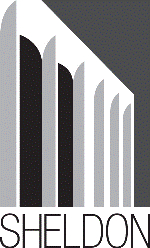Fine and Performing Arts, Hixson-Lied College of

Sheldon Museum of Art: Catalogs and Publications
Date of this Version
1986
Citation
Resource And Response, Sheldon Memorial Art Gallery. Volume 2 Number 2
Abstract
64 Steel Square represents Carl Andre's first use of modular units of steel. Dating from 1967, it reflects nearly all of the tenents of Minimalism which Wade Saunders and his generation of sculptors (who are now gaining prominence) have labored to abandon.
Precisely as the title* indicates, the work is a square of steel plates, each measuring, with minor variations, eight by eight inches . Those dimensions, squared, produce both the size and the form of the completely installed work.
The blunt, arithmetrical logic of the work is underscored by the conspicuous absence of the artist's hand: it is not carved or welded or, in some overtly skillful way, shaped. Instead, 64 Steel Square is simply uncrated and arranged in a format which reiterates the shape of its component parts. Those parts themselves were obtained from an industrial scrap yard. Although each has accumulated its own rusty/encrusted patina, there is no assigned order of juxtaposition; any arrangement is regarded as successful as any other.
That the 64 plates may be installed in any of thousands of different arrangements within the boundaries of the square emphasizes the sculptor's indifference to traditional levels of artistic control. Further, it points to the non-relational character of the work. That is, the work not only relates to nothing but itself, but also has no composed internal relationships. The steel plates are simply those steel plates. There is no intention to exploit the quality of the encrusted surface patina, or to arrange the elements of the work in a balanced and harmonious composition . Instead, the plates are merely put on the floor, one next to another, in repetitious sequence.


Comments
All images are copyright by the original artists. Publication copyright 1986 The Regents of the University of Nebraska